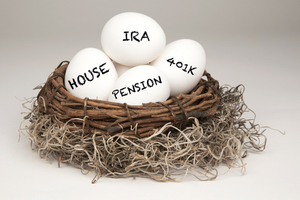The Purchasing Power of Retirement Assets
We recently attended the Southern California Tax and Estate Planning Council Conference and came away with a smart way of looking at retirement assets that we wanted to share. This is the idea of weighing the “purchasing power” of retirement assets when evaluating a traditional IRA and considering a Roth IRA conversion, as well as other Roth investments.
Historically, tax planning has focused on minimizing taxes and deferring any required tax payment for as long as possible. With the arrival of the Roth IRA, another approach was introduced: Consider paying taxes immediately at a known tax rate to allow future tax-free growth and distributions. The “purchasing power” idea can be explained like this (using very simple numbers for the ease of explanation):
Taxpayer 1 has $100,000 in a traditional IRA and $25,000 cash, for a total of $125,000.
Taxpayer 2 has $125,000 in a Roth IRA and no other assets.
This looks like each taxpayer has the same value of assets, $125,000.
However, if you consider purchasing power, all is not equal. Taxpayer 1 will have to pay taxes on any distribution from the traditional IRA in order to use those funds. Applying a 25% tax (again, making the math easy), Taxpayer 1 can withdraw $100,000 from the traditional IRA and use his $25,000 cash to pay the tax bill on that distribution. On the other hand, Taxpayer 2 has already paid taxes on the value of the Roth IRA assets so, upon taking a distribution, Taxpayer 2 still has $125,000 of purchasing power. By using a Roth IRA, or converting to one, the taxpayer can “lock-in” a known tax rate and then allow the retirement asset to grow tax free over time, thus preserving the purchasing power of the invested asset.
Roth IRA rules do not require the taxpayer or a spouse beneficiary to take Minimum Required Distributions (“MRD’s”). Any non-spouse beneficiary is subject to MRD’s but, presently, those distributions can be stretched out over the beneficiary’s lifetime, which maximizes long-term tax-free asset growth. In what has been expected for some time, the “death” of the stretch IRA seems to be looming. This means inherited IRAs will be subject to five-year distribution rules for any non-spouse beneficiary, completely disrupting the long-term growth benefits for future generations. When considering purchasing power, however, the Roth IRA can still be an effective tool for maximizing estate assets and minimizing taxes.
The death of stretch distributions will make conversions to Roth IRAs even more compelling. The spousal beneficiary rules are expected to remain unchanged, and non-spouse beneficiaries will still have a zero tax burden from Roth distributions. By contrast, beneficiaries inheriting a traditional IRA will be paying income taxes on distributions over a compressed, five-year timeline.
If you would like to discuss “purchasing power” concepts as they apply to your retirement assets, please contact Kling Law Offices for a free consultation. We are always happy to work with you in forming an estate plan that meets your unique needs.

